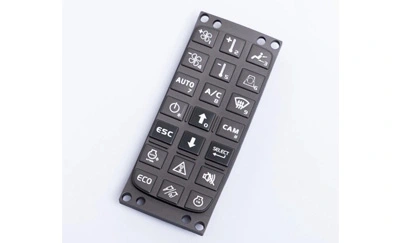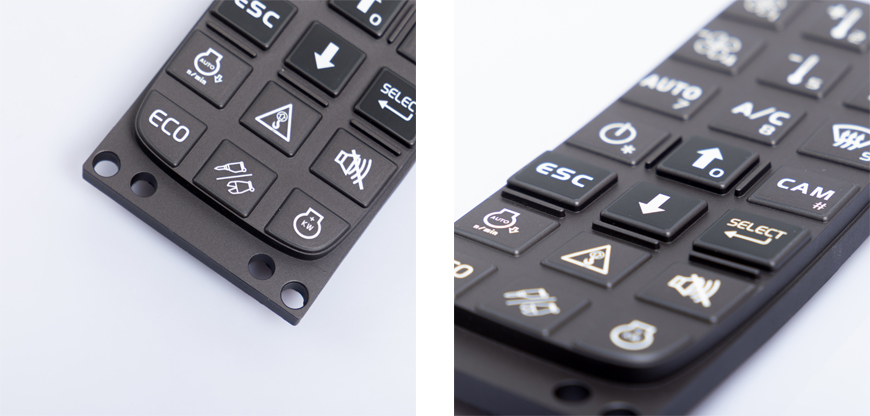
In today's fast-paced world, technology continues to evolve rapidly, pushing the boundaries of innovation. LGF membrane switches are a prime example of this advancement, offering a reliable and efficient solution for various industries. In this article, we'll delve into the intricacies of LGF membrane switches, exploring their features, applications, and benefits.

Introduction
What is an LGF Membrane Switch?
How Does an LGF Membrane Switch Work?
Advantages of Using LGF Membrane Switches
Applications Across Industries
5.1 Medical Devices
5.2 Industrial Control Panels
5.3 Consumer Electronics
Design and Customization Options
6.1 Graphic Overlay
6.2 Tactile Feedback
6.3 Backlighting
LGF Membrane Switch vs. Traditional Switches
Durability and Longevity
Maintenance and Care
Factors to Consider When Choosing an LGF Membrane Switch
10.1 Environmental Conditions
10.2 Interface Requirements
10.3 Aesthetic Considerations
Installation and Integration
Cost Efficiency
Future Trends in LGF Membrane Switches
Conclusion
Frequently Asked Questions
As technology continues to advance, the need for efficient and user-friendly interfaces has become increasingly essential. LGF (Light Guide Film) membrane switches have emerged as a cutting-edge solution that combines functionality, durability, and design flexibility. In this article, we'll take a closer look at what LGF membrane switches are and why they are gaining popularity in various industries.
An LGF membrane switch is a user interface technology that integrates a light guide film, typically made of polycarbonate, into the membrane switch construction. This technology allows for the even distribution of backlighting across the switch surface, creating a visually appealing and functional interface.
At its core, an LGF membrane switch consists of multiple layers, including the top graphic overlay, the LGF layer, and the bottom circuit layer. When a user presses a button on the switch, the LGF layer distributes the backlighting evenly, illuminating the chosen key or button. This feature enhances visibility in low-light conditions and contributes to a sleek and modern design.
LGF membrane switches offer several key advantages, making them a preferred choice in many applications:
Enhanced visibility in low-light environments
Aesthetic flexibility through customizable graphics and backlighting
Excellent durability and resistance to wear and tear
Tactile feedback for a satisfying user experience
Cost-efficient manufacturing options
5.1. Medical Devices
In the medical field, LGF membrane switches find extensive use in equipment like patient monitoring systems, diagnostic devices, and surgical instruments. The combination of reliability and ease of use makes them ideal for critical healthcare applications.
5.2. Industrial Control Panels
Industrial settings often require robust and dependable user interfaces. LGF membrane switches excel in this regard, with their ability to withstand harsh conditions, such as extreme temperatures and exposure to chemicals.
5.3. Consumer Electronics
From microwave ovens to remote controls, LGF membrane switches are present in many consumer electronic devices. Their sleek design and user-friendly operation enhance the overall user experience.
6.1. Graphic Overlay
One of the standout features of LGF membrane switches is the ability to customize the graphic overlay. This allows manufacturers to incorporate branding elements and create a visually appealing interface.
6.2. Tactile Feedback
LGF membrane switches can be designed to provide tactile feedback, giving users a reassuring sensation when pressing buttons. This feedback enhances the overall usability of the interface.
6.3. Backlighting
Backlighting options are virtually limitless with LGF membrane switches. Manufacturers can choose from various colors and intensities to create the desired visual impact.
Compared to traditional switches, LGF membrane switches offer several advantages. They are thinner, more versatile in design, and often more durable, making them an attractive option for modern devices and equipment.
LGF membrane switches are designed to withstand rigorous use. They are resistant to moisture, chemicals, and temperature fluctuations, ensuring a long lifespan even in challenging environments.
Maintenance of LGF membrane switches is minimal. Regular cleaning with a soft, damp cloth is usually sufficient to keep them in optimal condition. Avoid abrasive cleaners to prevent damage to the graphic overlay.
When selecting an LGF membrane switch for your application, consider the following factors:
10.1. Environmental Conditions
Assess the operating environment to ensure the switch can withstand the conditions, whether it's indoors, outdoors, or in a specific industrial setting.
10.2. Interface Requirements
Define the necessary features of your interface, such as tactile feedback and backlighting, to meet the user's needs effectively.
10.3. Aesthetic Considerations
Customize the switch's design to align with your brand and the desired visual appeal of your product.
Proper installation and integration are crucial for the seamless functioning of LGF membrane switches. Follow manufacturer guidelines to ensure a trouble-free setup.
LGF membrane switches offer a cost-effective solution for user interfaces, especially when considering their long lifespan and minimal maintenance requirements.
As technology continues to advance, we can expect LGF membrane switches to become even more versatile and feature-rich. Keep an eye out for new innovations in this field.
In conclusion, LGF membrane switches have revolutionized user interfaces by offering a combination of functionality, durability, and design flexibility. Their widespread applications across various industries showcase their adaptability and reliability. Whether you're in the medical field, industrial sector, or consumer electronics industry, LGF membrane switches are a choice worth considering.
Are LGF membrane switches suitable for outdoor use?
Yes, LGF membrane switches can be designed to withstand outdoor conditions, but it's essential to select the appropriate materials and protection levels.
Can LGF membrane switches be retrofitted into existing equipment?
Yes, in many cases, LGF membrane switches can be retrofitted into existing equipment to improve user interfaces.
How long do LGF membrane switches typically last?
LGF membrane switches have a long lifespan, often exceeding 1 million actuations.
Can LGF membrane switches support multiple languages on the same interface?
Yes, LGF membrane switches can accommodate multiple languages through customized graphic overlays.
Are there any limitations to the size and shape of LGF membrane switches?
While LGF membrane switches offer design flexibility, there are practical limitations to consider, depending on the specific application and manufacturing capabilities.